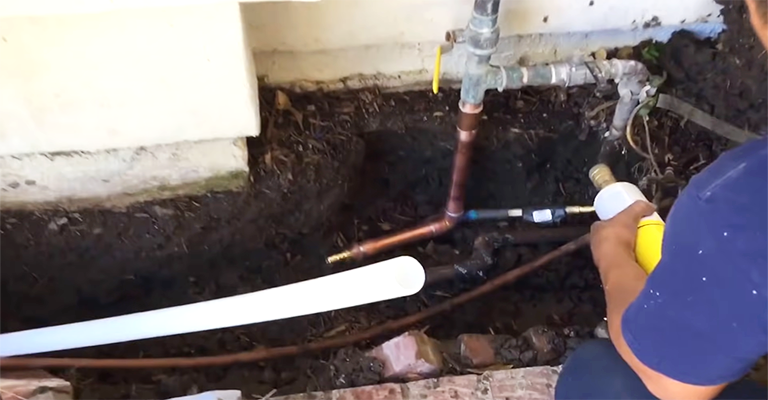How Do You Fix A Slow Draining Kitchen Sink With A Garbage Disposal
The struggle of having a slow draining kitchen sink exceeds every struggle ever faced in the kitchen. Most of the time, the first thing we grab to fix this problem is a chemical cleaner. However, chemical cleaners can do undesired damages to the unit components.
Here we tried to elaborate on some of the easiest ways to fix a slow draining kitchen sink with a garbage disposal.
Fixing A Slow Draining Kitchen Sink With A Garbage Disposal
To fix the unpleasant events such as a slow draining kitchen sink with the garbage disposal, we will be explaining briefly how to do that in some of the most effective ways. 99% of the time, the reason for a slow draining kitchen sink is clogging. So, we’ll be addressing the problem in this context.
Checking The Unit Switch
This is very common for the internal circuit breaker of the garbage disposal to stagger because of an over-clogged motor. As a result, the disposal can’t pound up the food waste properly. To be sure, turn the switch on and off a couple of times. If the internal circuit breaker is broken, nothing will happen.
For these circumstances, there is a tiny red button below the unit that resets the circuit breaker. Push it down and run the unit again. If the problem was because of a tripped circuit breaker, this should solve the problem and the unit will run smoothly again.
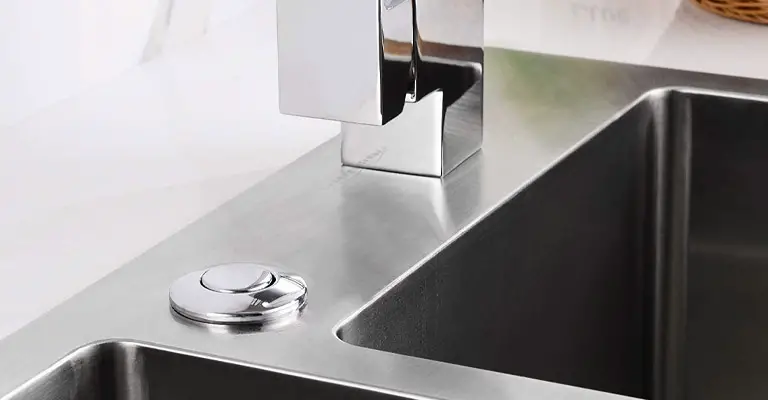
Checking For Jammed Stuff
In the former circumstances, if the motor turns on but the blades don’t spin or struggle to do so, then there’s a high chance of something being wedged in between there. On that event, you need to check the disposal for any jammed stuff.
First, drain the standing water out of the disposal so the blades are exposed. Now, point a flashlight down there and look for anything that can cause the blade to be stuck. In most cases, the criminal is a kitchen utensil like a spoon, fork, or maybe just a chicken bone.
When you spot the culprit, take a pair of tongs, reach into the disposal, and remove it. Never, ever stick your fingers inside unless you don’t mind losing a couple of them. Also, always remember to unplug the unit before working on these problems. At last, switch it back on, and hopefully, your problem is solved.
Boil Away The Problem
Grease clog is one of the most common reasons for a slow draining kitchen sink. Sometimes, greasy liquids while going down the drain solidify upon cooling. As a result, they get stuck on the inside of the pipe. Eventually, the build-up increases with time which results in a clogged kitchen sink.
In this case, fill a pot with water and bring it to a boil on the stove. A tea kettle instead of a pot works even better in this situation as you can pour the water right into the drain easily. Using a natural cleaner along with boiling water gives even better results for this condition.
Take a half cup of baking soda and a half cup of white vinegar. Pour the soda into the drain subsequently with the vinegar. Allow them to fizz inside for a couple of minutes. Now when pouring the boiling water it will melt the grease and unclog the drain in the process. Lastly, wash down everything with a faucet.
Plunger To The Rescue
If the boiling water trick didn’t work it’s time to bring out the big gun: the plunger. The plunger is like the oldest trick used in years after years to clear out cloggings. But to do it efficiently, there are a few things you need to pay attention to.
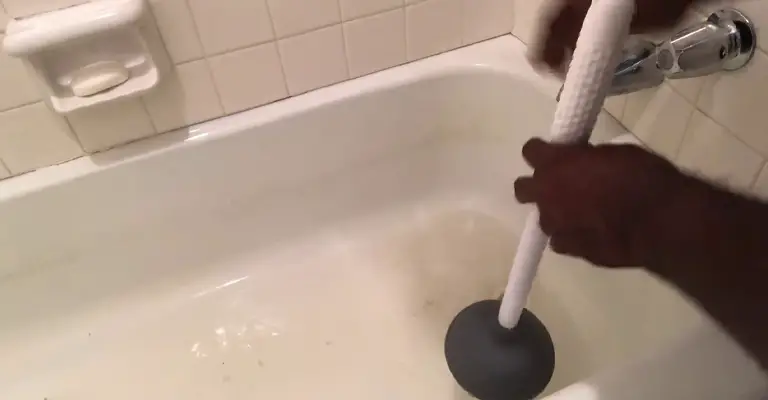
The first work is choosing the right type of plunger. Most people make the mistake of taking the same type of plunger used for toilets. Whereas a sink plunger should always be dome-shaped and big enough to cover the whole drain vent. Also, the sink should have water in it so that the plunger is submerged.
Now, place the plunger over the drain opening. Hold it firmly and pump it vigorously with force. Eventually, you will see the water starting to drain as the clog gets to loosen up. Keep repeating the process until the draining is faster. It may take a bit and several tries but most of the time this is a very efficient trick.
P-Trap Removal
Another common reason for the kitchen sink draining slowly is food waste stuck inside the p-trap. Generally, large food particles are responsible in this case. They get stuck inside the curved space and cause the water to drain at a slow pace. In any case, you’ll need to discard the waste to solve this problem.
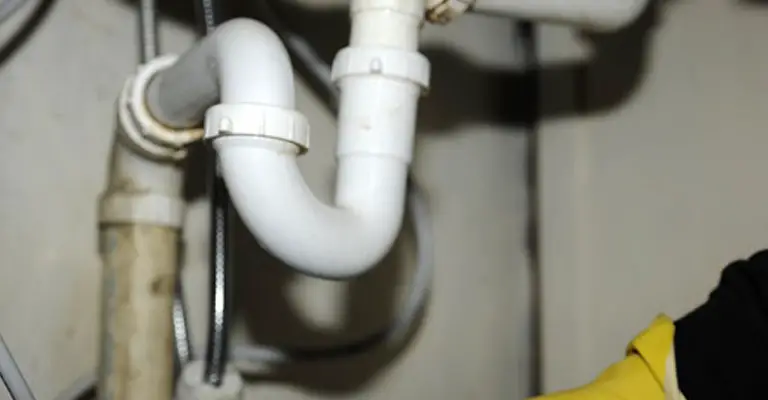
Removing the p-trap may seem a little tricky. Channel-type pliers are the handiest in this job so you’ll need one of those. Besides, the trap’s going to be filled with water and food waste when you open it so it’s better to place a bucket underneath to catch them without spilling everywhere.
Now, carefully dump the food waste inside the bucket. Remember to rinse it thoroughly to remove any buildups inside. Then put it back on and enjoy the unproblematic flow of water.
Send In The Drain Snake
If there is nothing in the p-trap that seems like the problem, then it’s most likely that the clog is somewhere else inside the drain pipe. Drain snakes are a type of thin wire tool that is used in this sort of situation. They can be a bit expensive for a plumbing tool but does an excellent job in its defense.
Before starting to snake the drain, place a bucket underneath it to reduce spill. Now, feed the snake inside the drain and push it back and forth. In case of clogs ahead, you will feel the snake facing blockings. Push it forward with more force then pull it back slightly.
While withdrawing the snake, turn it counterclockwise to lock the gunk with it. Take it out and remove the waste. Repeat the process until the whole drain is checked.
Natural Enzymes Are Often The Answer
Natural enzymes are what we call the true savior of the kitchen sink. Even though it can’t relieve the existing clog in your sink, it can for sure save you from facing the horror of a clogged kitchen sink twice.
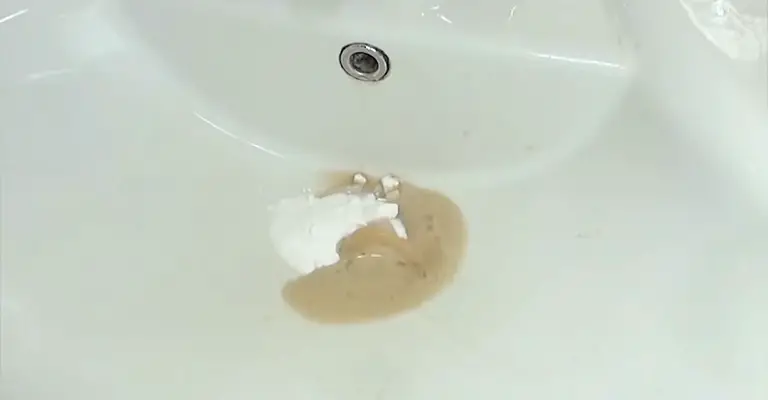
For having the natural ability to consume organic substances, enzymes were initially used to keep septic tanks safe from waste buildups. As it was proven greatly efficient, now they are available to be used as many plumbing solutions such as kitchen sink organic waste buildups.
Also, natural enzymes are a great replacement for chemical cleaners used in kitchen sinks. They don’t damage the surface of the drain insides while still protecting waste buildups. If used and maintained properly, you won’t even face another clogging disaster in your kitchen, hopefully.
Frequently Asked Questions
How much does a drain snake usually cost?
Ans: They cost about $25.
What kind of chemical cleaners are used for drain cleaning?
And: In most cases, bleach and lye are used as chemical drain cleaners. But they can damage your kitchen drain if not used and maintained with care.
Conclusions
Addressing a slow draining kitchen sink linked to a clogged garbage disposal requires understanding the intricate workings of garbage disposals. Regular maintenance is key; avoid pouring coffee grounds or too much food into the disposal unit, as these are common culprits of clogs. When it comes to cleaning, a mix of hot water and dish soap can do wonders in maintaining the optimal water flow and preventing build-up. Remember, the garbage disposal motor and blades are central to the disposal’s effectiveness. Ensuring they are clean and functioning correctly, along with a responsive garbage disposal switch, is crucial for a well-maintained kitchen sink drain.
Moreover, preventative measures are just as important as reactive solutions. Avoiding substances like coffee grounds and being cautious with the quantity of food processed by the garbage disposal can significantly reduce the risk of clogs. Regularly running hot water through the disposal unit helps to clear out any residual waste and keeps the blades sharp. In cases where simple methods do not suffice, it might indicate a deeper issue with the garbage disposal motor or switch, requiring professional inspection. Remember, a well-maintained garbage disposal not only prevents clogs but also ensures a seamless and hygienic kitchen environment.
No more kitchen disasters and pondering on how to fix a slow draining kitchen sink with a garbage disposal. Look for what your sink is fed the most. Categorizing the kitchen garbages helps a lot from arriving at unwanted drainage impediments or clogging.

